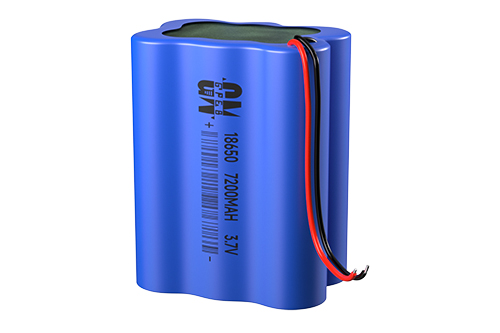A series of research and development activities seem to be gradually
pushing graphite heat storage technology towards the threshold of commercial
application, but it is not yet conclusive. The research and practice of graphite
heat storage technology in the photothermal power generation industry still
needs to be strengthened.
Solastor's tower graphite heat absorption heat storage system
If you haven’t been following this technology, you may not know about
graphite thermal storage. There have been some research and development
promotions on this technology before, but so far, no public research results
have been announced.
The most famous one is undoubtedly the progress made by the Spanish company
SENER in this area, which benefited from the support of the Sunshot program of
the U.S. Department of Energy to develop graphite heat storage technology.
According to public information, SENER is researching an efficient and
economical solid graphite heat storage solution. According to the introduction
of the project on the Sunshot website: If the research and development is
successful, this heat storage technology can be stably applied at temperatures
exceeding 800 degrees Celsius, or even as high as 1650 degrees Celsius, without
parasitic energy consumption, and has an expected lifespan of up to 30 years. .
However, the website also pointed out the challenges that the project may face,
including improving the internal layout design of the thermal storage system,
reducing pipeline requirements, increasing its economy, improving thermal
conductivity, reducing graphite consumption, etc.
Solastor, an innovative distributed tower thermal power generation
technology company in Australia (refer to CSPPLAZA related reports), is a
company that uses high-purity graphite as heat storage material and applies it
in practice. It was completed and put into operation in May 2011. The 3MW Lake
Cargelligo demonstration power station is such a tower thermal power generation
project that uses graphite as heat storage material. It integrates the heat
receiver, heat storage system, and steam generation system into one system,
although the system design and structure tend to be simple. ization, but it is
impossible to scale up a single machine. The company calls this system the
G1-SSR, and Solastor describes it as a simple, powerful solar superheat and
thermal storage receiver. The company’s general manager Steve Hollis also came
to the Chinese market in March this year to promote this technology, which he
claimed was a heat storage technology that could help solar thermal power
generation achieve 24-hour power generation.
graphite nanoparticles
Nick Bain, chairman of Solastor, is also convinced that graphite is a good
material choice for the G1-SSR heat receiver. However, the company generally
does not discuss this technology publicly and only introduces it at some
business events.
The most common heat storage medium used in current large-scale
photothermal power stations is nitrate molten salt, and the cost of purely using
graphite for heat storage is high. So, can graphite nanoparticles be mixed with
existing molten salt to improve the efficiency of molten salt? Specific heat?
Research was conducted at Texas A&M University with funding from the U.S.
Department of Energy. Dr. Debjyoti Banerjee of the research team said that
mixing graphite nanoparticles into molten salt can improve the heat storage
capacity of molten salt. In addition to graphite carbon nanotubes, we are also
studying the feasibility of ceramic nanoparticles. This material is more
expensive in terms of price. low. Using ceramic nanoparticles, you can give
molten salt similar heat storage capabilities as using graphite nanoparticles.
The concentration of added particles only needs to be between 0.1% and 1%.
In addition, Dr. Banerjee's team also conducted research on chloride salts
as an alternative heat storage medium to nitrates. The results show that it can
work at operating temperatures above 1000 degrees Celsius, especially after
mixing ceramic nanoparticles, the effect is more significant.
While current test equipment cannot operate at such high temperatures, what
the A&M University research team was able to determine is that the special
heat-storage capabilities of chloride salts can be greatly enhanced when mixed
with ceramic nanoparticles. It has been tested and proven at temperatures up to
700 degrees Celsius.
Future design routes
Dr. Banerjee said: The use of graphite nanoparticles mixed with molten salt
is a very promising thermal storage technology route. It can not only be used in
traditional solar thermal power stations, but also in more forward-looking
innovative designs. However, chloride salt is highly corrosive, so if you want
to use this molten salt, you must design a pipeline system and molten salt tank
that are highly corrosion-resistant and must be resistant to high temperatures.
This has an important impact on the life of the system.
If thermal storage temperatures above 1,000 degrees Celsius are required,
project developers will likely have to use some special type of graphite
material and install fireproof piping and fluid handling equipment. This is the
only way to guarantee that it will operate at such high temperatures and be
corrosion-resistant. Consider using graphite for piping systems because of its
natural high-temperature resistance, Banerjee said.
For the chloride salt itself, mixing graphite nanoparticles to increase its
specific heat also has a certain effect, but this material is more susceptible
to oxidation than ceramic nanoparticles. But that doesn’t mean graphite
nanoparticles can’t be mixed with molten salt.
Calculated based on a 1% mixing ratio, a 30,000-ton heat storage tank
requires 300 tons of graphite nanoparticles. We can consider whether to use
ceramic nanoparticles or graphite nanoparticles from the perspective of cost and
benefit.
Research on the heat storage properties of graphite or ceramic materials
continues. Mixing heat storage with the currently commonly used sodium
nitrate/potassium nitrate molten salts requires practical verification. Chloride
salts should be used instead of nitric acid molten salts. Hybrid heat storage
research is still in its infancy, and pure use of graphite or ceramic materials
for heat storage also faces many problems. In these areas, we need more R&D
investment.
Read recommendations:
Ni-MH AAA1000mAh 1.2V
26650 lithium battery
Characteristics and applications of lithium-ion batteries.18650 lithium ion battery 3.7v
lithium battery pack 48v 120ah
1.5v dry cell battery











































 360° FACTORY VR TOUR
360° FACTORY VR TOUR
 Whatsapp
Whatsapp
 Tel
Tel Email
Email TOP
TOP